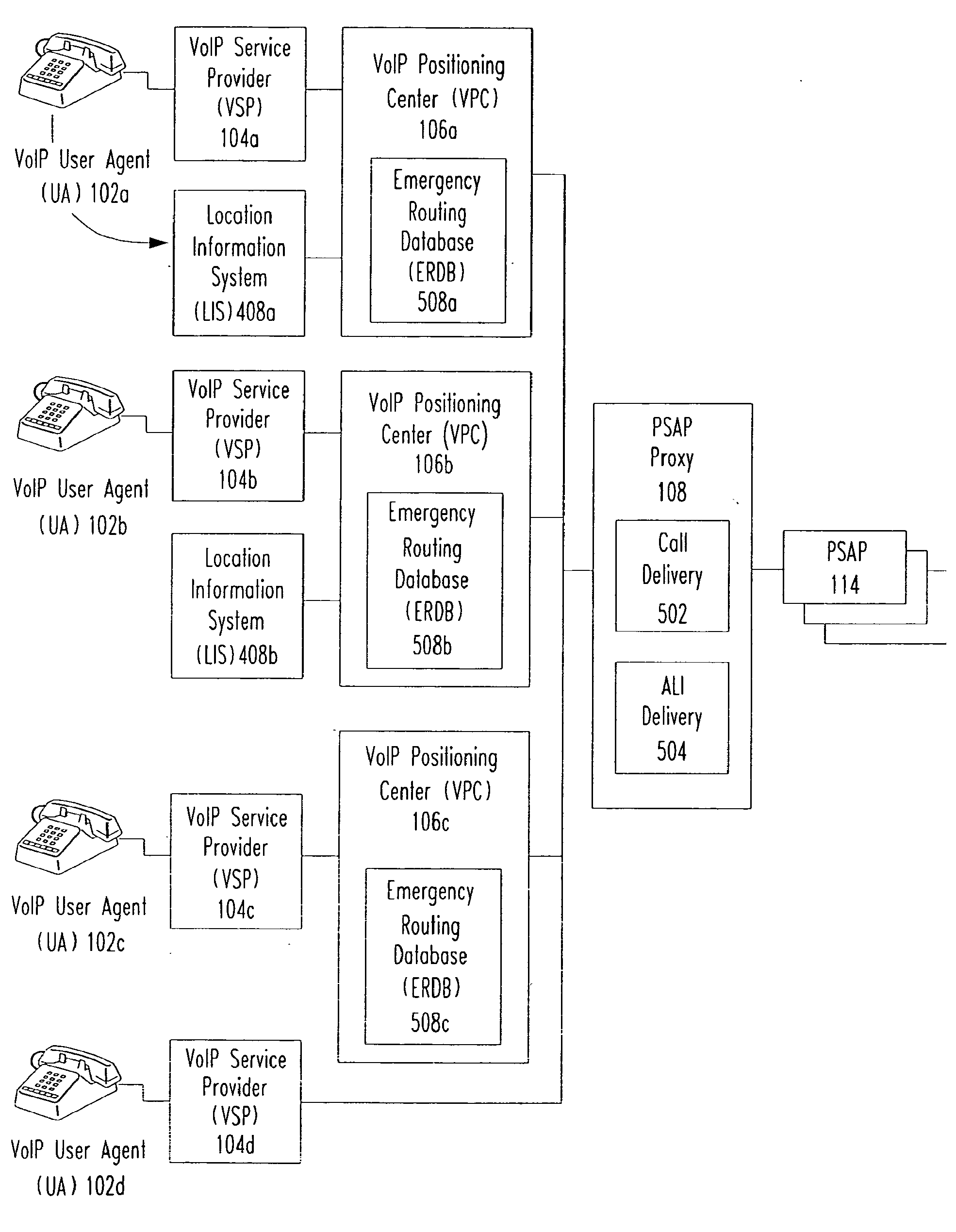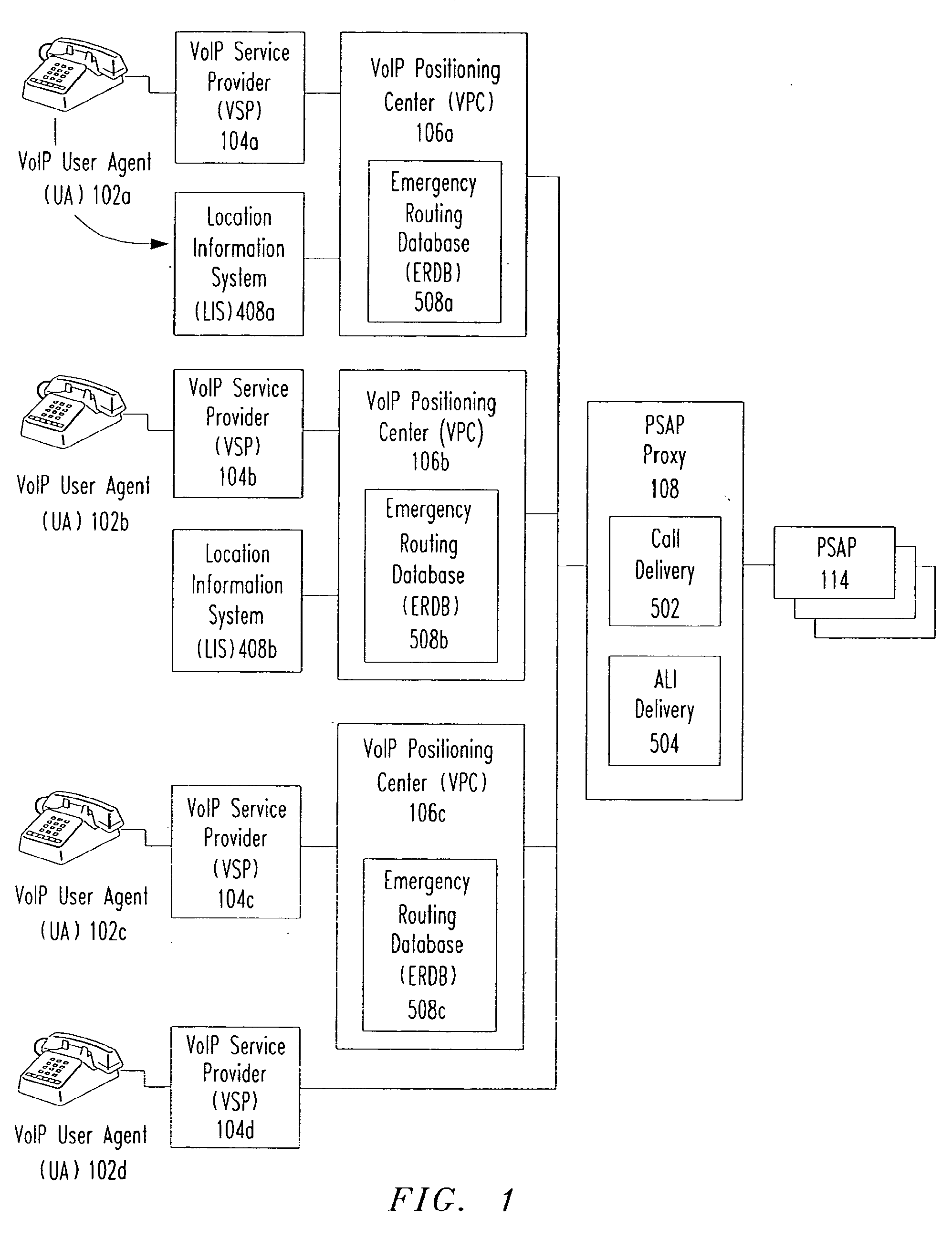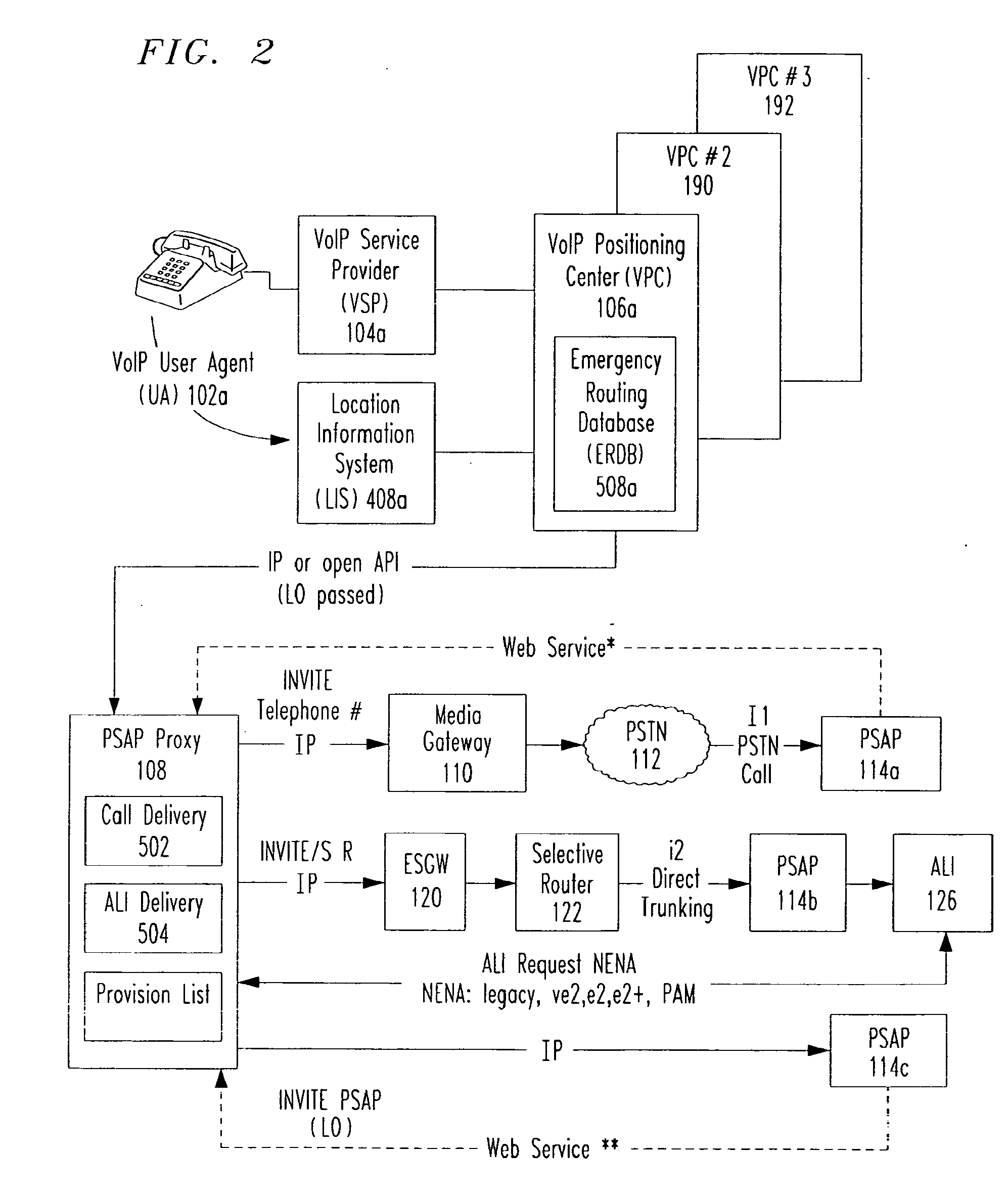Public service answering point (PSAP) proxy
a public service and proxy technology, applied in the field of telecommunications, can solve the problems of no uniform interface between the various psaps for call delivery, no uniformity among the thousands of different psaps, and no enhancement of public safety access points (psaps)
- Summary
- Abstract
- Description
- Claims
- Application Information
AI Technical Summary
Benefits of technology
Problems solved by technology
Method used
Image
Examples
Embodiment Construction
[0035] The present invention implements VoIP functions of call delivery and content delivery (e.g, ALI) in a separate network entity referred to herein as a “PSAP Proxy”. A PSAP Proxy is a unit that handles delivery of a VoIP call to a correct PSAP. A PSAP Proxy also provides VoIP call ALI information to the PSAP. The PSAP Proxy is separately IP addressable by multiple different VPCs, potentially from multiple VoIP service providers, providing greater network simplicity and efficiency than is provided by conventional network architectures.
[0036] When a Voice Over Internet Protocol (VoIP) caller dials 9-1-1, the VoIP Service Provider's Soft Switch sends the VoIP call to a VPC for addition of a Location Object (LO). Then, based on the position of the caller determined by the location object, the VPC selects the correct PSAP Proxy and passes the E911 emergency call, with location object, over an Internet Protocol connection to the correct PSAP Proxy. The PSAP proxy, accepting an IP in...
PUM
 Login to View More
Login to View More Abstract
Description
Claims
Application Information
 Login to View More
Login to View More - R&D
- Intellectual Property
- Life Sciences
- Materials
- Tech Scout
- Unparalleled Data Quality
- Higher Quality Content
- 60% Fewer Hallucinations
Browse by: Latest US Patents, China's latest patents, Technical Efficacy Thesaurus, Application Domain, Technology Topic, Popular Technical Reports.
© 2025 PatSnap. All rights reserved.Legal|Privacy policy|Modern Slavery Act Transparency Statement|Sitemap|About US| Contact US: help@patsnap.com



